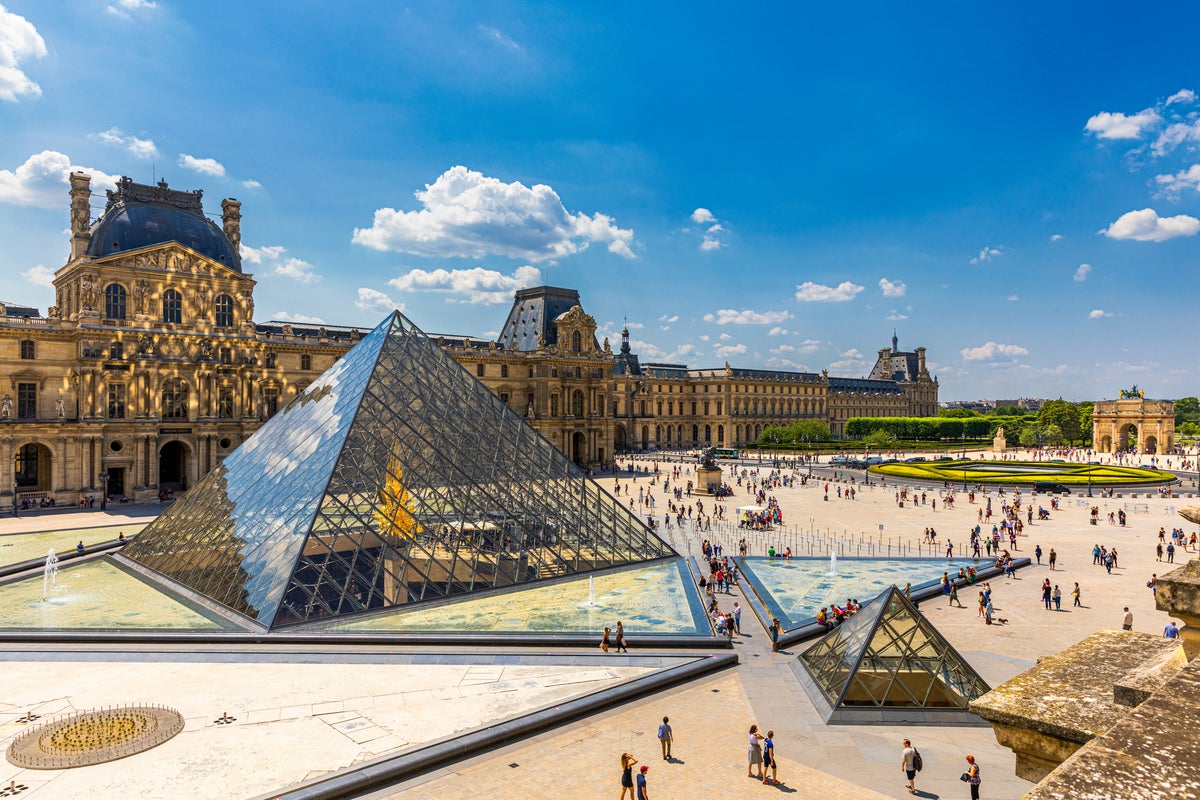The Louvre Museum, one of the world’s most iconic and visited cultural institutions, unexpectedly closed its doors on Monday, leaving thousands of tourists stranded outside its famous pyramid. This unforeseen closure stemmed from a protest by the museum’s staff, who are voicing concerns over deteriorating working conditions. The situation has not only disrupted the travel plans of numerous visitors but also cast a spotlight on the challenges faced by employees within the renowned museum.
This article delves into the reasons behind the Louvre’s closure, the specific grievances of the protesting staff, and the broader implications for tourists and the museum’s operations. Understanding the context of this event is crucial for anyone planning a visit to the Louvre or other major cultural attractions, as it highlights the potential for unexpected disruptions and the importance of staying informed.
Staff Protest Over Working Conditions
The primary reason for the Louvre’s unexpected closure is a protest initiated by its front-of-house staff, including gallery attendants, reception, and security workers. According to Sarah Sefian, a union representative from CGT-Culture, this action was a spontaneous expression of discontent over worsening labor conditions. The staff members are particularly concerned about overcrowding and understaffing, which they claim have significantly impacted their ability to perform their duties effectively.
“It’s a movement led by reception agents who are suffering from the working conditions at the Louvre,” Ms. Sefian stated. This protest underscores the critical role that museum staff play in ensuring a positive visitor experience and the potential consequences when their concerns are not adequately addressed. The decision to close the museum reflects the seriousness of the situation and the staff’s determination to bring about change.
Thousands of Tourists Left Waiting
The closure of the Louvre has had a direct and immediate impact on thousands of tourists who had planned to visit the museum on Monday. Many visitors were left waiting in long queues outside the museum, unaware of the ongoing protest. The museum’s official website posted a message stating, “Due to strikes in France, the museum may open later and some exhibition rooms may remain closed. We thank you for your understanding.” However, this message did little to alleviate the frustration and disappointment of those who had traveled from around the world to see the Louvre’s renowned collection.
Some ticket-holders, faced with the uncertainty of when the museum might reopen, eventually gave up and left. This not only disrupted their travel itineraries but also potentially affected their overall impression of Paris as a tourist destination. The incident serves as a reminder of the importance of flexibility and preparedness when traveling, as unforeseen events can sometimes derail even the most carefully planned trips.
Museum’s Response and Potential Reopening
As of midday on Monday, the Louvre remained closed, with museum leadership engaging in talks with the protesting staff in an attempt to resolve the situation. Union officials expressed hope that the museum might reopen in the afternoon, but there was no guarantee. The museum’s management faces the challenge of addressing the staff’s concerns while also minimizing disruption to visitors and maintaining the Louvre’s reputation as a world-class cultural institution.
The situation highlights the delicate balance between the rights of workers to protest and the needs of tourists and the broader tourism industry. Finding a resolution that satisfies both parties is essential for ensuring the long-term stability and success of the Louvre.
Overcrowding and Understaffing Issues
One of the central issues driving the staff protest is the problem of overcrowding at the Louvre. As one of the most popular tourist destinations in Europe, the museum welcomes millions of visitors each year. In 2024, it attracted 8.7 million people, with more than three-quarters coming from outside France. This influx of tourists can create significant strain on the museum’s resources and staff, leading to long queues, crowded galleries, and a diminished visitor experience.
In addition to overcrowding, the staff also cite understaffing as a major concern. Insufficient numbers of employees can exacerbate the challenges posed by large crowds, making it difficult to maintain security, provide assistance to visitors, and ensure the smooth operation of the museum. Addressing these issues will require a commitment from the museum’s leadership to invest in additional staff and implement strategies to manage visitor flow more effectively.
Dire State of the Louvre Building
The recent closure of the Louvre is not the first indication of challenges facing the museum. In January 2024, Louvre President Laurence des Cars warned the French Culture Minister Rachida Dati about the dire state of the centuries-old building. Des Cars noted that visiting the museum had become an ordeal, citing a lack of space for visitors to take breaks and insufficient food and sanitary facilities. In response, a limit of 30,000 visitors per day has been imposed to avoid overcrowding.
These warnings underscore the importance of ongoing investment in the maintenance and improvement of the Louvre’s infrastructure. Failure to address these issues could not only detract from the visitor experience but also potentially jeopardize the safety and security of the museum and its collection.
Key Takeaways and Implications
The unexpected closure of the Louvre Museum serves as a reminder of the complex interplay between tourism, labor conditions, and cultural preservation. The staff protest highlights the importance of addressing the concerns of museum employees and ensuring that they have the resources and support they need to provide a high-quality visitor experience. Overcrowding and understaffing are significant challenges that require proactive management and investment.
For tourists, the incident underscores the need for flexibility and preparedness when traveling. Unexpected events can occur, and it is essential to stay informed and be ready to adapt to changing circumstances. As the Louvre works to resolve the current situation, it is hoped that the museum will emerge stronger and more resilient, better equipped to serve both its employees and the millions of visitors who come to experience its treasures each year.

Leave a Reply